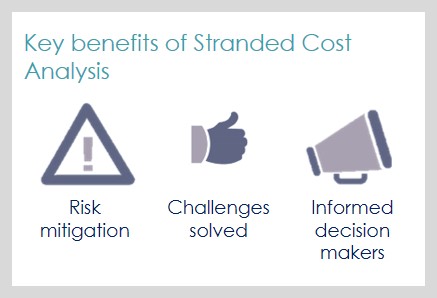Stranded Cost Analysis
The parent may be left with a disproportionate cost structure after the sale.
Client challenges
- Negative economies of scale result in higher costs for the parent
- Post carve-out, the parent’s fixed overhead cost are shared over fewer business units
- Business unit heads are taken by surprise when they get charged higher management costs
- Direct negative EBITDA impact post-closing
How we can help
- We help negotiate with suppliers to minimize the impact of lower economies of scale
- we calculate the impact of stranded costs and enter it into the communication to the Market
- We calculate the impact on the recharges to the remaining business units
- We include the stranded costs in the parent’s KPI’s, budgets and forecasts
Key benefits
- negotiate with suppliers from a stronger pre-deal position
- no negative surprises in communication to the Market
- KPI’s, budgets and forecasts are adjusted to reflect the changes in overhead and supplier costs
Lessons learned
- Faced with the need for cost reduction, management commonly fails at execution
- Inability to deal with competing priorities during a time of transition
- insufficient resources to execute
- failure to follow through tends to plague parent in its bid to avoid saddling unnecessary costs
- Parents can take 1 to 3 years to recover EBITDA%

